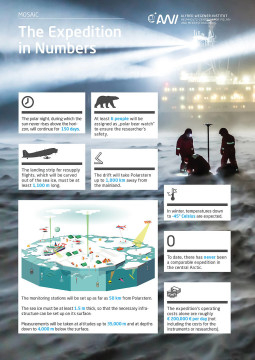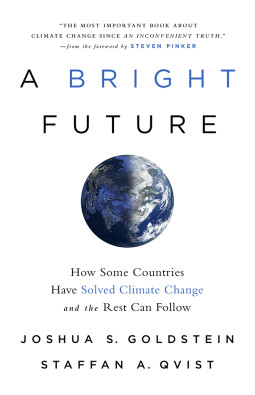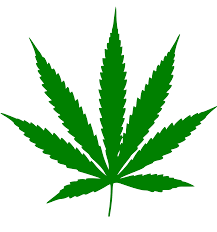
Host: Beth Bennett
Producer: Beth Bennett
Engineer: Maeve Conran
Executive Producer: Joel Parker
Listen to the show:
Podcast: Play in new window | Download (Duration: 28:01 — 25.7MB)
Subscribe: RSS
The KGNU Science Show

Host: Beth Bennett
Producer: Beth Bennett
Engineer: Maeve Conran
Executive Producer: Joel Parker
Listen to the show:
Podcast: Play in new window | Download (Duration: 28:01 — 25.7MB)
Subscribe: RSS

In the first feature (start time 1:00) KGNU’s Maeve Conran speaks with Antonia Malchik, author of A Walking Life. This book explores the relationship between walking and our humanity, how we have lost it through a century of car-centric design, how we can regain it and more. This part of the interview, produced especially for How On Earth, focuses on the science behind what makes us able to walk. For a pedestrian, walking is a simple as putting one foot in front of another, right? Well from a scientific perspective, there’s quite a bit to it.
In the second feature (start time 13:10), Chip Grandits speaks with Dr. Detlev Helmig, Associate Research Professor at the Institute for Arctic and Alpine Research. He is one of several Boulder area climate scientists preparing for The MOSAIC expedition, the largest ever Central Arctic research expedition. In September 2019 A German research icebreaker the Polarstern will head northeast from Tromsø, Norway where it will spend an entire year caught up in the shifting Arctic ice. Dr. Helmig talks about the need to improve climate models of the poles, what motivates a such complex, expensive and dangerous expedition and what motivates scientists to take a 2 month stint on board the Polarstern trapped in the Arctic ice.
Host: Chip Grandits
Producer: Chip Grandits
Engineer: Chip Grandits
Additional Contributions: Maeve Conran
Executive Producer: Joel Parker
Listen to the show:
Podcast: Play in new window | Download (Duration: 25:27 — 23.3MB)
Subscribe: RSS
 With graduation season is upon us, today’s edition of How on Earth is our annual “Graduation Special”. Our guests in the studio today are scientists who have or will soon receive their Ph.D. in a STEM-related field. They talk about their thesis research, their grad school experiences, and what they have planned next.
With graduation season is upon us, today’s edition of How on Earth is our annual “Graduation Special”. Our guests in the studio today are scientists who have or will soon receive their Ph.D. in a STEM-related field. They talk about their thesis research, their grad school experiences, and what they have planned next.
 Marcus Piquette – CU Boulder, Department of Astrophysical & Planetary Sciences
Marcus Piquette – CU Boulder, Department of Astrophysical & Planetary Sciences
Topic: In-Situ Observations of the Interplanetary Dust Population from Earth to the Kuiper Belt
 David Reens – CU Boulder, Department of Physics
David Reens – CU Boulder, Department of Physics
Topic: Pushing the Limits for Directly Cooled Molecules
 Abigail Reens– CU Boulder, Department Molecular, Cellular & Developmental Biology
Abigail Reens– CU Boulder, Department Molecular, Cellular & Developmental Biology
Topic: Salmonella Within Macrophages – An Extreme Environment: Small Molecule Inhibitors of Bacterial Efflux and the Roles of Bacterial Lipid Metabolism and Mammalian Co-culture During Infection
Host / Producer / Engineer : Joel Parker
Listen to the show:
Podcast: Play in new window | Download (Duration: 29:07 — 26.7MB)
Subscribe: RSS

We speak with Larry Gold, founder of the Gold Lab Symposium that will take place at CU Boulder’s Muenzinger Auditorium this Friday and Saturday. This year’s symposium will feature leading scientists discussing the double-edged swords of our modern treatments for cancer, immunity and autoimmunity. To sign up or learn more, see Gold Lab Foundation.
Host,Producer,Engineer Shelley Schlender
Executive Producer: Joel Parker
Podcast: Play in new window | Download (Duration: 27:34 — 37.9MB)
Subscribe: RSS

Tackling Plastic Pollution (starts at 3:09): It is, sadly, common for beachcombers around the world to see, along with clam shells and sand dollars, plastic bottles, bottle caps, cigaret filters and fish nets washed up on shore. According to estimates by World Economic Forum, our oceans will be populated by more pounds of plastic waste than fish by 2050. About a third of all plastic that is produced does not get properly collected; instead, much of it ends up floating in the ocean, or clogging the guts of innocent albatross, other birds and sea mammals. It could take 450 years, or forever, for plastic to completely biodegrade. Plastic waste just breaks down (photo-degrades) into tiny bits, causing harm to wildlife and, potentially, humans. How On Earth host Susan Moran and contributing host Jeff Burnside interview two guests who are working in different ways to assess the extent of the problem and its impacts, to educate people about it, and to effect positive change. Dr. Jenna Jambeck, an associate engineering professor at the University of Georgia, lead-authored a seminal paper in 2015 that estimated how much plastic waste is in the ocean. She will soon co-lead an all-female National Geographic expedition to study plastic pollution in India and Bangladesh. Laura Parker is a staff writer at National Geographic magazine covering climate change and ocean environments. She won the Scripps Howard award for environmental reporting her June 2018 National Geographic cover article titled “Planet or Plastics?”
Hosts: Susan Moran, Jeff Burnside
Producer: Susan Moran
Engineer: Evan Perkins
Executive Producer: Joel Parker
Listen to the show here:
Podcast: Play in new window | Download (Duration: 26:27 — 24.2MB)
Subscribe: RSS
 In this week’s show, Beth interviews Joshua Goldstein. He and co-author Steffan Qvist wrote eloquently about how nuclear energy can replace fossil fuels – a vital necessity in a rapidly warming world. A new generation of nuclear plants reduces waste and completely eliminates CO2. In Sweden, France and Ontario, these plants have allowed these countries to eliminate their reliance on fossil fuels and significantly reduce their carbon footprints.
In this week’s show, Beth interviews Joshua Goldstein. He and co-author Steffan Qvist wrote eloquently about how nuclear energy can replace fossil fuels – a vital necessity in a rapidly warming world. A new generation of nuclear plants reduces waste and completely eliminates CO2. In Sweden, France and Ontario, these plants have allowed these countries to eliminate their reliance on fossil fuels and significantly reduce their carbon footprints.
Host: Beth Bennett
Producer: Beth Bennett
Engineer:Maeve Conran
Additional Contributions: Joel Parker
Executive Producer: Joel Parker
Listen to the show;
Podcast: Play in new window | Download (Duration: 26:20 — 24.1MB)
Subscribe: RSS
 Concussion Test (Starts 1:00) David Howell is chief researcher at Children’s Hospital Colorado. Howell says the century old Romberg Balance Test can help evaluate how long a child will need therapeutic intervention after a blow to the brain.
Concussion Test (Starts 1:00) David Howell is chief researcher at Children’s Hospital Colorado. Howell says the century old Romberg Balance Test can help evaluate how long a child will need therapeutic intervention after a blow to the brain.
 Pot & Pain Meds (Starts 7:00 ) Mark Twardowski is doctor in Grand Junction who does endoscopic procedures that include pain medications. Twardowski has just published an analysis that shows his patients who use marijuana need more pain medication and sedation during a procedure, such as a colonoscopy, compared to patients who do not report having used marijuana. GO HERE FOR INTERVIEW TRANSCRIPT
Pot & Pain Meds (Starts 7:00 ) Mark Twardowski is doctor in Grand Junction who does endoscopic procedures that include pain medications. Twardowski has just published an analysis that shows his patients who use marijuana need more pain medication and sedation during a procedure, such as a colonoscopy, compared to patients who do not report having used marijuana. GO HERE FOR INTERVIEW TRANSCRIPT
 Chords and Codons (Starts ) Fulbright Scholar Colin Campbell is a scientist who specializes in spectroscopy. He also composes songs that turn science data into music. Today (April 16th) at 5:30, Campbell’s songs will be part of a performance at CU-Boulder’s Biofrontiers Institute in the Butcher Auditorium.
Chords and Codons (Starts ) Fulbright Scholar Colin Campbell is a scientist who specializes in spectroscopy. He also composes songs that turn science data into music. Today (April 16th) at 5:30, Campbell’s songs will be part of a performance at CU-Boulder’s Biofrontiers Institute in the Butcher Auditorium.
Hosts/Producer/Engineer: Shelley Schlender
Executive Producer: Joel Parker
Listen to the show:
Podcast: Play in new window | Download (Duration: 26:44 — 24.5MB)
Subscribe: RSS
 This special edition of How on Earth is produced in conjunction with the Conference on World Affairs. Our guest a participants of the Conference: Dr. Michelle Thaller, assistant director of science at NASA’s Goddard Space Flight Center. Her path has taken her from Harvard to Georgia State University to Caltech to NASA. Dr. Thaller has studied hot stars, colliding stellar winds, binary star evolution, evolved stellar companions, and infrared astronomy. She is one of the regular hosts of the Discovery Science Channel shows: “How the Universe Works” and “Space’s Deepest Secrets” and hosts the podcast “Orbital Path” on public radio.
This special edition of How on Earth is produced in conjunction with the Conference on World Affairs. Our guest a participants of the Conference: Dr. Michelle Thaller, assistant director of science at NASA’s Goddard Space Flight Center. Her path has taken her from Harvard to Georgia State University to Caltech to NASA. Dr. Thaller has studied hot stars, colliding stellar winds, binary star evolution, evolved stellar companions, and infrared astronomy. She is one of the regular hosts of the Discovery Science Channel shows: “How the Universe Works” and “Space’s Deepest Secrets” and hosts the podcast “Orbital Path” on public radio.
Host / Producer / Engineer / Executive Producer: Joel Parker
Listen to the show:
Podcast: Play in new window | Download (Duration: 27:13 — 24.9MB)
Subscribe: RSS
 A Consumer’s Guide to Pesticides in Produce (starts 7:55) You may be wondering if you washed the strawberries, blueberries or kale that you had for breakfast this morning enough to rid them of residue of potentially harmful pesticides. That is, if they were conventionally, not organically, grown. According to the U.S. Department of Agriculture, more than 200 different pesticides remain in some form on popular fruits and vegetables that Americans eat every day. And before testing all the produce, the USDA thoroughly washes and peels them. Such tests show that simply washing produce does not remove all pesticides. In a recently released report, as part of its “Shopper’s Guide to Pesticides in Produce,” The Environmental Working Group ranked the pesticide contamination of 47 popular fruits and vegetables. Its analysis, which was based on results of nearly 50,000 samples of produce that the USDA tested, found that 70 percent of produce contains pesticide residues. But don’t despair: There is also good news in the report. Sydney Evans, a science analyst at EWG, and Liza Gross, an independent investigative reporter, speak with host Susan Moran about the EWG report and the broader societal and environmental implications of pesticides. See Liza Gross’ articles on pesticides and other issues.
A Consumer’s Guide to Pesticides in Produce (starts 7:55) You may be wondering if you washed the strawberries, blueberries or kale that you had for breakfast this morning enough to rid them of residue of potentially harmful pesticides. That is, if they were conventionally, not organically, grown. According to the U.S. Department of Agriculture, more than 200 different pesticides remain in some form on popular fruits and vegetables that Americans eat every day. And before testing all the produce, the USDA thoroughly washes and peels them. Such tests show that simply washing produce does not remove all pesticides. In a recently released report, as part of its “Shopper’s Guide to Pesticides in Produce,” The Environmental Working Group ranked the pesticide contamination of 47 popular fruits and vegetables. Its analysis, which was based on results of nearly 50,000 samples of produce that the USDA tested, found that 70 percent of produce contains pesticide residues. But don’t despair: There is also good news in the report. Sydney Evans, a science analyst at EWG, and Liza Gross, an independent investigative reporter, speak with host Susan Moran about the EWG report and the broader societal and environmental implications of pesticides. See Liza Gross’ articles on pesticides and other issues.
Hosts: Maeve Conran, Susan Moran
Producer: Susan Moran
Engineer: Maeve Conran
Additional Contributors: Chip Grandits, Beth Bennett, Gretchen Wettstein
Executive Producer: Joel Parker
Listen to the show here:
Podcast: Play in new window | Download (Duration: 27:25 — 25.1MB)
Subscribe: RSS
 This View of Life (starts 6:56) In this episode of How on Earth, we talk with David Sloan Wilson, an evolutionary biologist with a special interest in human biocultural evolution. Dr. Wilson is Distinguished Professor of Biology and Anthropology at SUNY Binghamton, and president of the Evolution Institute as well as editor in chief of its online magazine This View of Life. It is not just about biology, these ideas are formed by decades of research and drawing on studies that cover topics from the breeding of hens to the timing of cataract surgeries for infants to the organization of of an automobile plant. Last month he published his latest book, also titled This View of Life to present a comprehensive case for what he calls Completing the Darwinian Revolution.
This View of Life (starts 6:56) In this episode of How on Earth, we talk with David Sloan Wilson, an evolutionary biologist with a special interest in human biocultural evolution. Dr. Wilson is Distinguished Professor of Biology and Anthropology at SUNY Binghamton, and president of the Evolution Institute as well as editor in chief of its online magazine This View of Life. It is not just about biology, these ideas are formed by decades of research and drawing on studies that cover topics from the breeding of hens to the timing of cataract surgeries for infants to the organization of of an automobile plant. Last month he published his latest book, also titled This View of Life to present a comprehensive case for what he calls Completing the Darwinian Revolution.
Hosts: Chip Grandits, Joel Parker
Producer and Engineer: Joel Parker
Additional Contributions: Shelley Schlender, Susan Moran, Alejandro Soto
Executive Producer: Beth Bennett
Listen to the show:
Podcast: Play in new window | Download (Duration: 27:56 — 25.6MB)
Subscribe: RSS